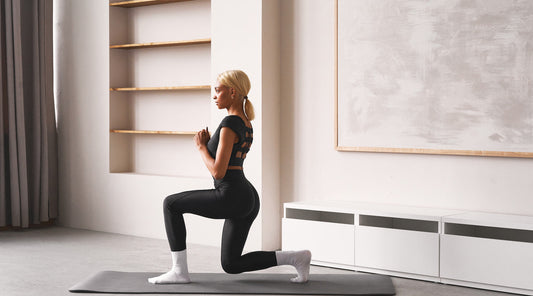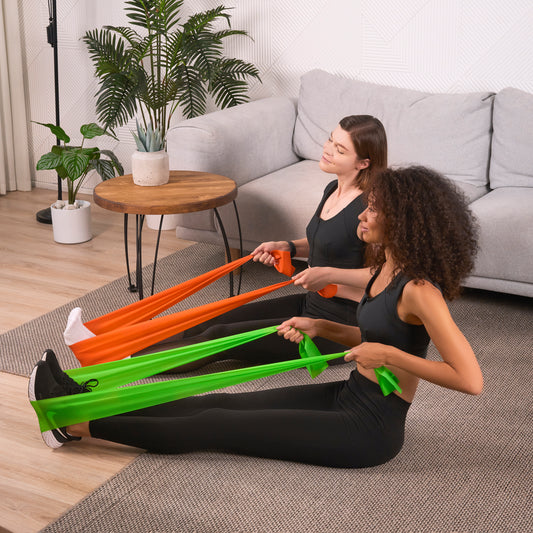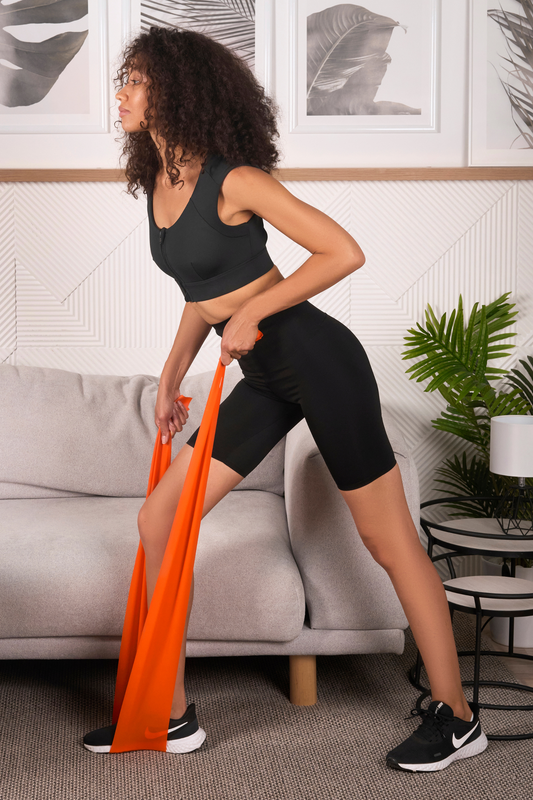“Slouching isn’t bad for your spine,” says a recent CNN headline (1). The article, originally published in The Conversation (2), calls out two older scientific studies, one from 2019 and another from 2021 (3, 4). The problem with this story’s angle — and misleading header — is that neither of these studies come to the conclusion that slouching comes with zero negative effects. In fact, both studies focus on the perception of what good posture is — not on how it may actually directly or indirectly impact the body and mind.
Digging a little deeper, the first study looks at the language around “correct posture” — especially when you hear “sit up straight” — and how this language can lead to a troubling fixation around one’s posture. The authors say that, “Although there is evidence that people with low back pain may find certain postures provocative, it cannot be concluded that the postures are the cause of pain.” Essentially, we can’t deduce that slouching directly causes pain. The second study reflects on a small group of 100 individuals and how each participant perceived their habitual sitting posture vs. what they assume to be their “optimal” sitting posture — which, especially among females, can often be exaggerated.
We find these studies fascinating and important. We know that every body is different and so is every person’s “optimal” posture. How we talk about “good” and “bad” posture can also affect how any one person may view their body.
That said, there’s still plenty of recent evidence to show that poor posture is associated with a number of issues that can affect us physically, mentally, and emotionally. Let’s dig into why slouching develops, how it impacts your health, and how to train your body to maintain better posture for better overall well-being.
Why Slouching Develops and How It Affects Your Health
Slouching is a habit developed over time — over many hours slouched at your desk, slumped on the sofa, bent over your phone, lugging heavy bags around, and other everyday activities. The more you slouch, the more your muscles respond and it starts to feel natural in your body.
Studies have shown that slouching can lead to physical problems like musculoskeletal discomfort and muscular fatigue, even in adolescents (5, 6, 7). Even The Conversation article adds one major caveat to its argument — that slouching has been linked to worse mood and poorer information and memory recall, and that both can be rapidly improved when one moves to a more erect position.
There are also a number of issues and unexpected risks that can arise from slouching, including headaches, breathing difficulties, incontinence, constipation, and indigestion, to name a few (8). There’s a good chance that improving your posture will come with more benefits than you may realize, even enhanced confidence, focus, and mental clarity.
Best exercises and ways to stop slouching
Want to stop hunching? If you’ve made slouching a habit, the good news is you have the power to reverse that habit. Poor posture isn’t developed overnight — and it certainly won’t be fixed overnight. But, with time and dedication, you can build proper muscle memory, improve your proprioception (i.e. body awareness), and start to find your body’s optimal alignment without having to keep reminding yourself to “sit up straight.”
Here are three effective ways to keep slouching to a minimum:
- Commit to a regular movement routine that includes exercises that strengthen and stretch muscles in the upper back, chest, and core. Start with these nine exercises to improve your posture and these seven shoulder exercises. Add resistance bands for an extra challenge.
- Invest in ergonomic furniture or make small adjustments to your current work setup to promote good posture. See the section on sitting posture below to get some helpful tips on how to avoid slouching at your desk.
- Try a posture corrector like the Etalon posture correcting bra to help get your body used to the feeling of good posture. By gently pulling your shoulders back and opening your chest, a posture corrector can help prevent slouching. Learn more about how to use a posture corrector.
These small lifestyle changes can result in big transformations in your posture and, ultimately, your well-being.
Exercises you need to try
Slouching can cause discomfort, muscle imbalances, and long-term postural issues. If you’re wondering how to stop slouching, the key is to strengthen the back, shoulders, and core while improving flexibility in the chest and neck. These five exercises will help you retrain your body to maintain proper alignment and prevent slouching in daily activities.
1. Chin Tucks (Neck Strengthening Exercise)
This simple exercise strengthens the deep neck muscles and helps correct forward head posture.
How to do it: Sit or stand tall. Gently tuck your chin toward your chest as if creating a double chin. Hold for 5 seconds, then relax. Repeat 10–15 times. Doing this daily can make a noticeable difference if you're trying to stop slouching.

2. Shoulder Blade Squeezes
This move strengthens the upper back and counters rounded shoulders.
How to do it: Sit or stand upright. Squeeze your shoulder blades together as if holding a pencil between them. Hold for 5 seconds, then release. Repeat 10–15 times. If you’re wondering how do you stop slouching, incorporating this exercise into your routine is a great first step.

3. Wall Angels
Wall angels improve shoulder mobility and reinforce good posture.
How to do it: Stand against a wall with your back flat and arms raised at a 90-degree angle. Slowly raise and lower your arms, keeping them in contact with the wall. Perform 10 repetitions. If you’re struggling with how to stop slouching, this exercise will help open up your shoulders and strengthen your upper back.

4. Cat-Cow Stretch
This stretch increases spinal flexibility and reduces tension from prolonged sitting.
How to do it: Start on all fours. Inhale as you arch your back and lift your head (cow pose). Exhale as you round your spine and tuck your chin (cat pose). Repeat for 10 rounds. Stretching is just as important as strengthening when it comes to how do you stop slouching.

5. Superman Exercise
Strengthening the lower back and core helps maintain upright posture.
How to do it: Lie face down with arms extended forward. Lift your arms, chest, and legs off the ground. Hold for 5 seconds, then lower down. Repeat 10 times. This movement trains your muscles to stay engaged and prevent slouching.
If you're serious about how to stop slouching, incorporating these exercises into your routine consistently will build the strength needed to naturally hold yourself tall and maintain better posture over time!

Practical tips for overcoming slouching
You may not realize how much you’re slouching throughout the day until you start paying attention to it. Be conscious of slouching shoulders, a hunched back, or a head that juts forward, and take into account the following tips for maintaining better posture when sitting, standing, and walking.
Tips for proper sitting posture at a desk or in a car
It can be easy to spend several hours in one position, especially if you’re typing away at a laptop or clocking miles on a long road trip. Here are a few quick tips for maintaining good posture during both scenarios:
When sitting at a desk or table:
- Adjust the height of your chair so that your knees are level or slightly higher than your hips.
- Keep your feet flat on the floor or on a footrest.
- Try to use a chair with a backrest that supports the natural curve in your lower back.
- Position your computer monitor to eye level.
- Relax your shoulders and keep your elbows at roughly a 90-degree angle.
- Keep your ears aligned with your shoulders. Try not to let your head and chin sit in front of your shoulders.
- Sit with your hips as far back on the chair as possible.
- Avoid crossing your legs.

When sitting in a car:
- Adjust the seat so that you can comfortably reach the pedals and press them down with your entire foot. Avoid sitting too close to the steering wheel — this can leave you at higher risk for more serious injuries in the event of a collision (9).
- To put the least amount of pressure on your back, adjust the seat so that you are leaning back a little more than 90 degrees. Avoid leaning so far back that you end up pushing your head and neck forward.
- Align the top of the headrest to sit between the top of your head and the top of your ears.
- Make sure your eye level is at least three inches above the steering wheel.
- Sit with your hips as close to the seat back as possible and at roughly the same level as your knees.
- Keep your knees slightly bent.
When you have to sit for long periods, don’t forget to take breaks!
Techniques for maintaining upright posture while standing and walking
We talk about the sitting epidemic quite a bit (“sitting is the new smoking,” some people like to say). But to reap the benefits of standing and walking, good posture is just as crucial — if not even more so.
When standing:
- Keep a slight bend in your knees.
- Relax and broaden your shoulders.
- Let your pelvis sink with gravity.
- Find more tips here from qigong practitioners.

When walking:
- Keep your chin parallel to the ground and avoid looking straight down.
- Engage your core by drawing your belly button toward your spine.
- Move your feet with a steady heel-to-toe roll.
- Find more tips for walking with good posture here.
Maintaining good posture when standing and walking will allow you to stand longer, walk farther, and avoid any potential injuries.
Using posture-correcting devices to prevent slouching
“I need to stop myself from slouching!” Do you find yourself repeating this mantra? Being mindful of your posture is the first step to improving it.
If you catch yourself slouching on a regular basis, you may want a little extra help. This is where a posture-correcting device can be a valuable tool. A posture bra can help pull your shoulders back, open your chest, and prevent slouching. It will also help train your body to maintain good posture on its own.
SOURCES:
- CNN. Slouching isn’t bad for your spine, but may impact your memory. https://edition.cnn.com/2024/05/19/health/slouching-spine-health-conversation-partner-wellness/index.html
- The Conversation. Slouching isn’t as bad for you as you might think. https://theconversation.com/slouching-isnt-as-bad-for-you-as-you-might-think-223801
- Journal of Orthopaedic & Sports Physical Therapy. “Sit Up Straight”: Time to Re-evaluate. https://www.jospt.org/doi/10.2519/jospt.2019.0610
- Musculoskeletal Science & Practice. Notions of "optimal" posture are loaded with meaning. Perceptions of sitting posture among asymptomatic members of the community. https://pubmed.ncbi.nlm.nih.gov/33281104/
- Heliyon. The prevalence of bad posture and musculoskeletal symptoms originating from the use of gadgets as an impact of the work from home program of the university community. https://www.ncbi.nlm.nih.gov/pmc/articles/PMC9556879/
- Medicina. Effects of Prolonged Sitting with Slumped Posture on Trunk Muscular Fatigue in Adolescents with and without Chronic Lower Back Pain. https://www.ncbi.nlm.nih.gov/pmc/articles/PMC7822118/
- Frontiers in Physiology. Effective Assessments of a Short-Duration Poor Posture on Upper Limb Muscle Fatigue Before Physical Exercise. https://www.ncbi.nlm.nih.gov/pmc/articles/PMC7579401/
- Harvard Health Publishing. 3 surprising risks of poor posture. https://www.health.harvard.edu/staying-healthy/3-surprising-risks-of-poor-posture
- Advances in Engineering Research. Proceedings of the 2015 International Conference on Advanced Engineering Materials and Technology. https://www.atlantis-press.com/proceedings/icaemt-15/25839256
Photo by Andrea Piacquadio on Pexels
FAQs
Can slouching be prevented?
Can you correct years of slouching?
How do I stop slouching so much?
How long does it take to correct slouching?
Trending
Try Etalon posture improvement products









